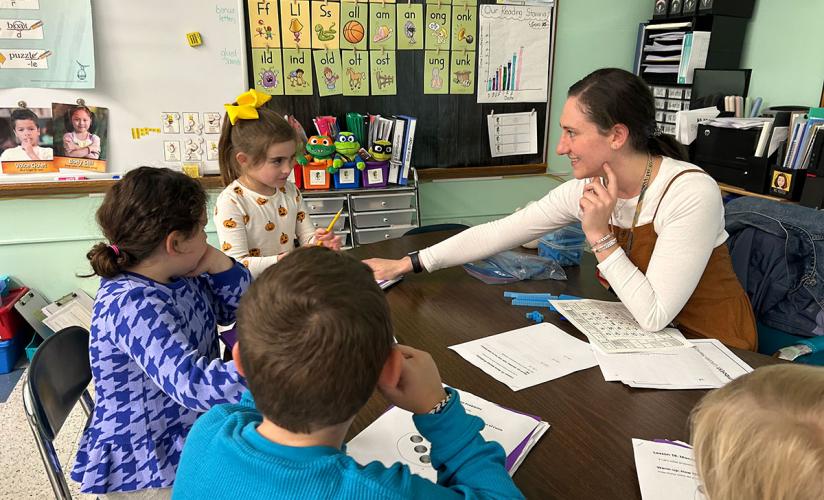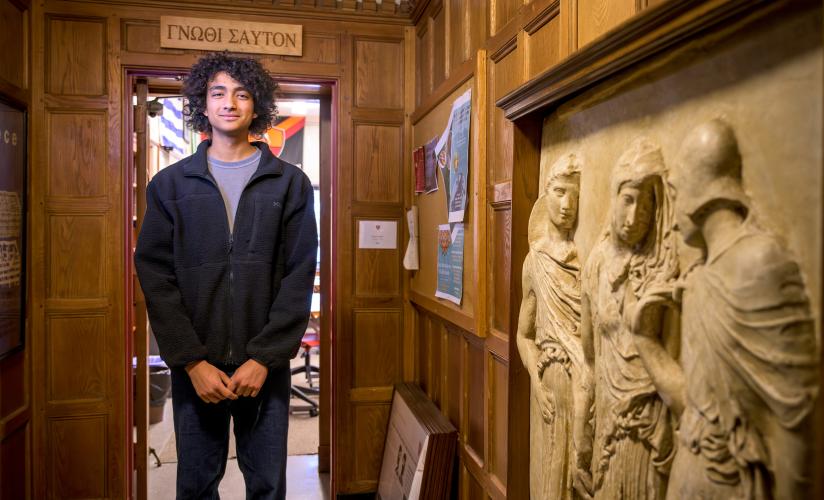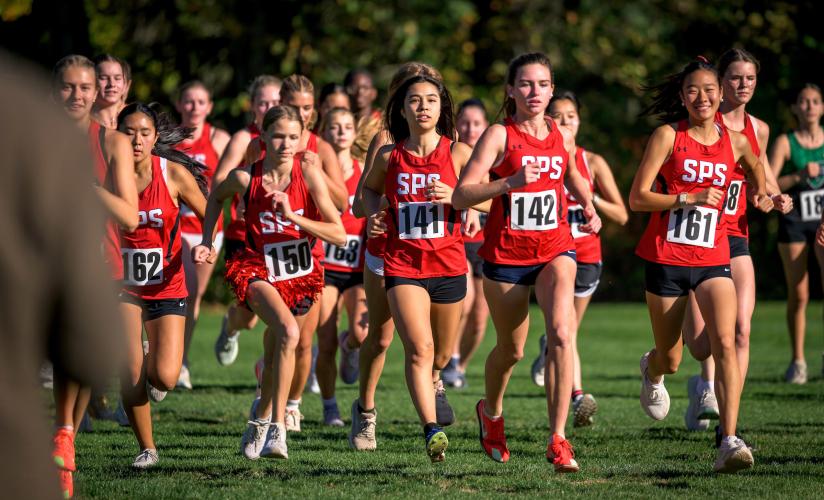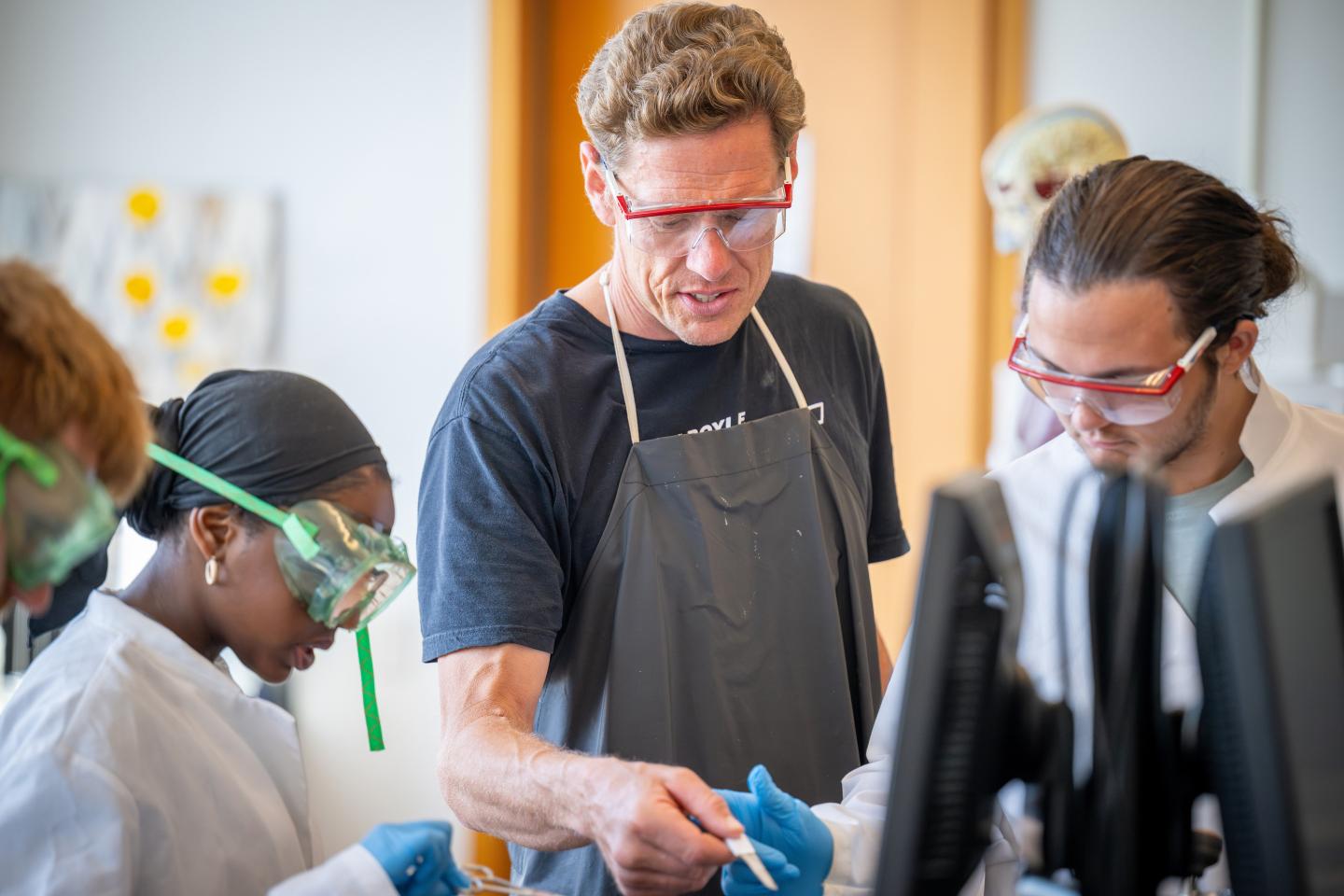

Inside the summer program’s popular Physiology for Athletic Performance class
BY IAN ALDRICH
In early spring, as Jason Minsaas began looking over the course catalog for his summer at the ASP, one course in particular caught his eye: Physiology for Athletic Performance. A rising senior at Pinkerton Academy in Derry, New Hampshire, Minsaas doesn’t play high school sports, but he does have a deep interest in anatomy and physiology — and a physically demanding part-time job.
“I work at a doggy daycare where I often run around with the dogs and pick them up and down to help them up to their kennels when they’re taking a break,” says the aspiring veterinarian. “I enjoy learning about how body systems work because I like to find similarities and differences between human and animal bodies since I want to go into that field of work. So that really stood out to me.”
Over his time at ASP, Minsaas says the course delivered even more than he expected with a cross-discipline approach that’s anchored him in the lab and at the gym. He logged and studied his personal nutrition and sleep habits; collected data on his workout recoveries and undertook a three-week evidence-based training program to document changes in areas like heart rate zones, VO2 max and body power expressions.
Away from the treadmills and stationary bikes, Minsaas and his eight classmates also logged significant hours at the Lindsay Center for Mathematics and Science. They conducted detailed breakdowns of large-scale research studies and performed animal dissections. In one class, students got a detailed look at the myofascial network undergirding a chicken wing; in another they analyzed the mechanics of a pig lung to better understand their own respiratory system.
If it sounds wide ranging that’s because it is—and it’s exactly what Morgan Llewelyn envisioned when he introduced the course to the ASP curriculum in 2021.
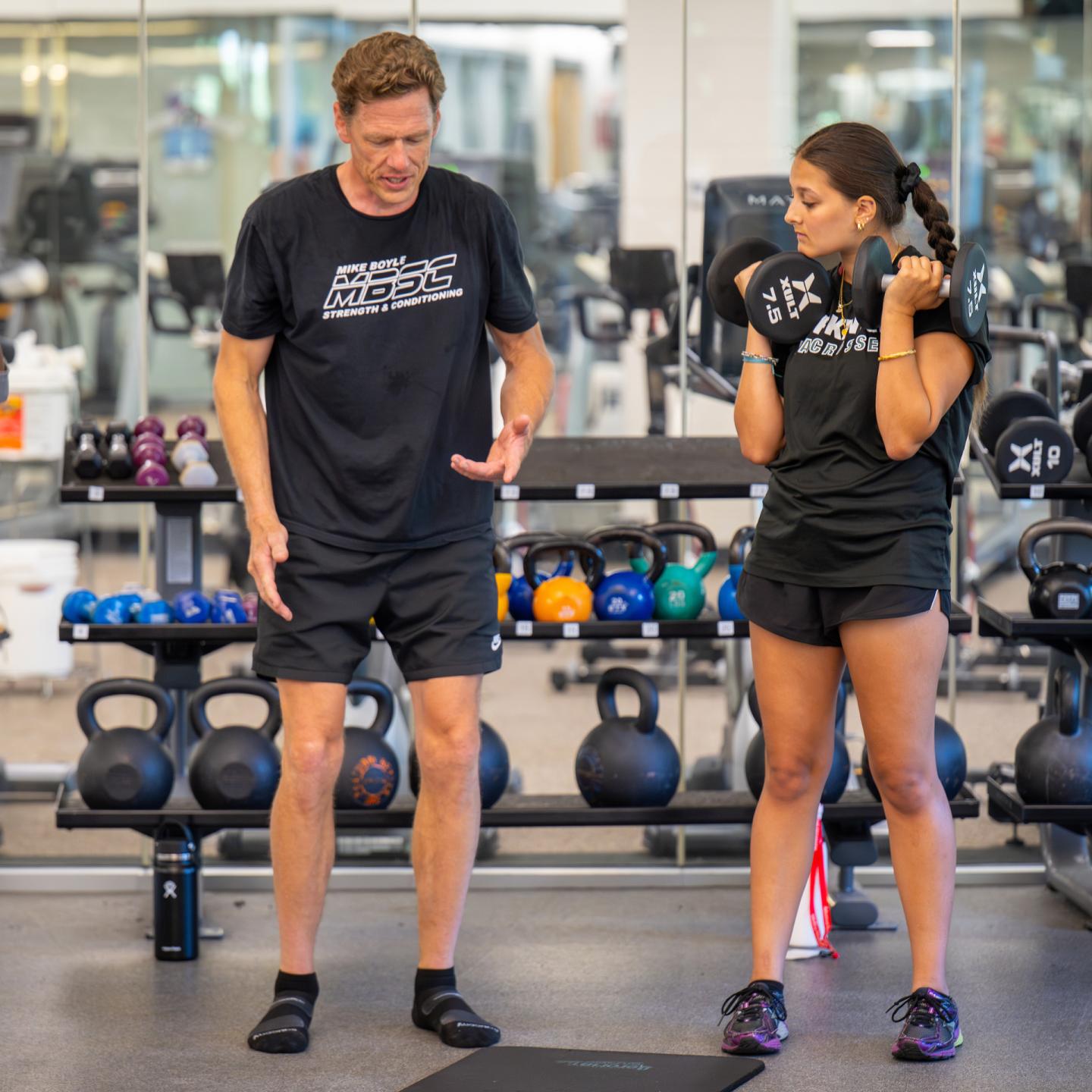
When we learn a new movement or a new technique it can help us learn our new behaviors. It’s a habit-forming vehicle, it forms grit so that maybe kids go, ‘Hey, I did something hard, now I can go over here and do something different that’s also hard.”
“I’ve always been into fitness and human performance,” says Llewelyn, an athletic trainer and head strength and conditioning coach at Fountain Valley School in Colorado Springs, Colorado. As a high schooler, Llewelyn says, his primary interest was having bigger arms and rounder shoulders. But as the science behind good training has evolved, he’s found the field to be intellectually rewarding, too. Take neuroscience and the neuroplasticity connection: “When we learn a new movement or a new technique it can help us learn our new behaviors,” he says. “It’s a habit-forming vehicle, it forms grit so that maybe kids go, Hey, I did something hard, now I can go over here and do something different that’s also hard. That’s really powerful.”
For Llewelyn, so is the opportunity to teach at ASP. His connection to St. Paul’s goes back more than two decades. His wife, Danielle, taught science at the School from 2005-2012 and Llewelyn’s first exposure to ASP came as a house manager for several summers.
“You couldn’t help but be impressed with the caliber of kids who came [to ASP],” he says. “They were so invested in their learning.”
So, even after new opportunities took the Llewelyns to other parts of the country, the uniqueness of ASP remained with Morgan. In 2020 he pitched the School on an entirely new kind of program that fused his love of science and athletics.
The resulting curriculum is one Llewelyn hopes reverberates with students long after they’ve left ASP. Beyond teaching the mechanics for jumping higher or running faster, Physiology for Athletic Performance offers a roadmap for students to better understand themselves and their bodies. When you have greater intel, Llewelyn reasons, on how humans respond to better sleep, nutrition and activity, you’re more likely to make those things foundational to your life.
“What I really want them to understand is that moving makes you healthier in your mind and body,” Llewelyn says. “Because the opposite is also true. You don’t even have to move the fastest — you just find something that you like to do and move. Our bodies are amazing and we can do amazing things with it. We just need to understand what we’re capable of.”
Minsaas couldn’t agree more. “This course has changed the way I look at my own training and habits and helped me realize that I don’t need to do anything flashy in order to build up strength,” he says. “As long as I can remember that I should build up slowly doing basic movements that I typically use in my day-to-day life, I will be able to get stronger without hurting myself.”
Whether you’re an athlete or not, that’s an outcome anyone can root for.

